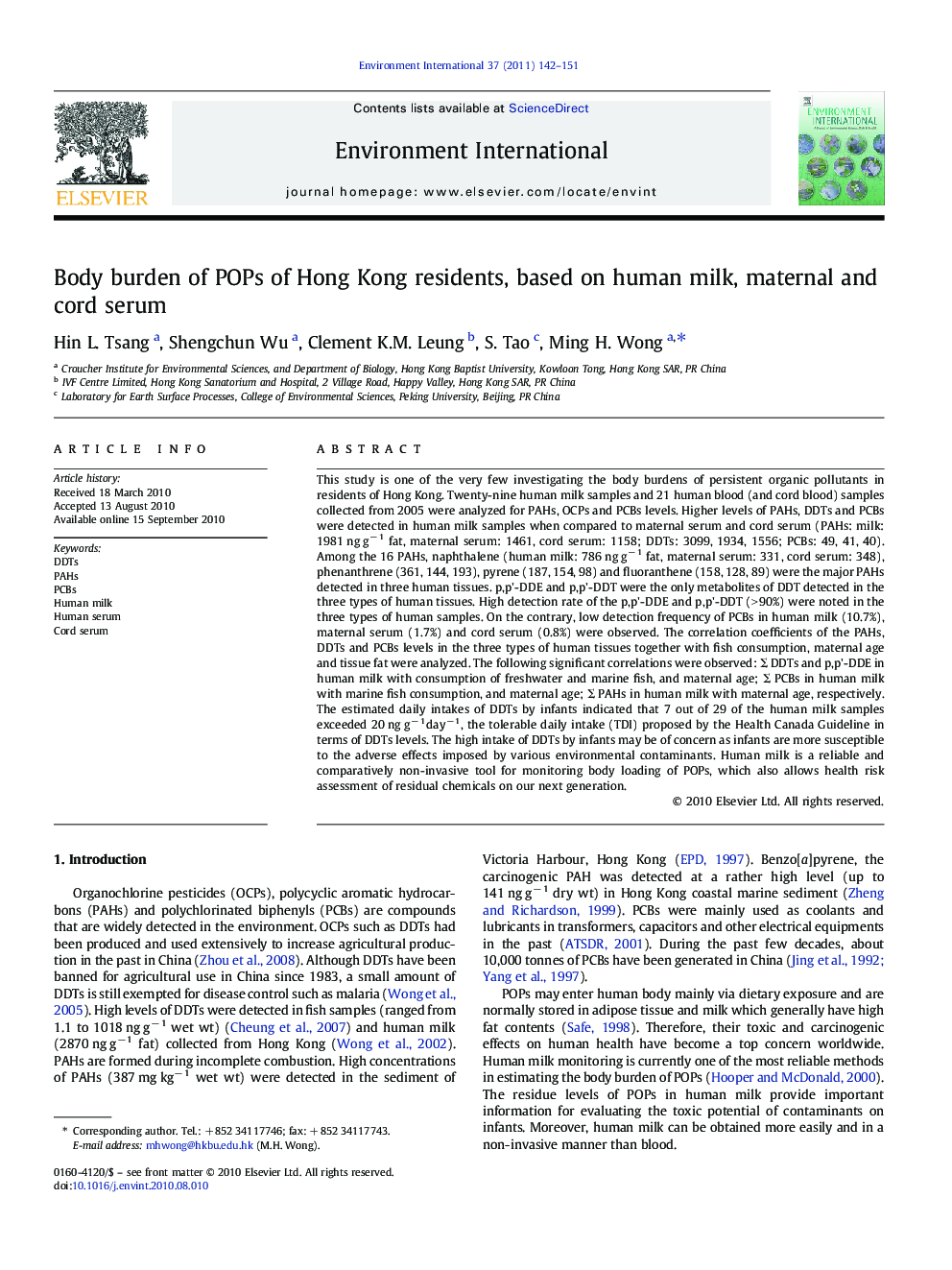| کد مقاله | کد نشریه | سال انتشار | مقاله انگلیسی | نسخه تمام متن |
|---|---|---|---|---|
| 4423342 | 1308821 | 2011 | 10 صفحه PDF | دانلود رایگان |

This study is one of the very few investigating the body burdens of persistent organic pollutants in residents of Hong Kong. Twenty-nine human milk samples and 21 human blood (and cord blood) samples collected from 2005 were analyzed for PAHs, OCPs and PCBs levels. Higher levels of PAHs, DDTs and PCBs were detected in human milk samples when compared to maternal serum and cord serum (PAHs: milk: 1981 ng g− 1 fat, maternal serum: 1461, cord serum: 1158; DDTs: 3099, 1934, 1556; PCBs: 49, 41, 40). Among the 16 PAHs, naphthalene (human milk: 786 ng g− 1 fat, maternal serum: 331, cord serum: 348), phenanthrene (361, 144, 193), pyrene (187, 154, 98) and fluoranthene (158, 128, 89) were the major PAHs detected in three human tissues. p,p'-DDE and p,p'-DDT were the only metabolites of DDT detected in the three types of human tissues. High detection rate of the p,p'-DDE and p,p'-DDT (> 90%) were noted in the three types of human samples. On the contrary, low detection frequency of PCBs in human milk (10.7%), maternal serum (1.7%) and cord serum (0.8%) were observed. The correlation coefficients of the PAHs, DDTs and PCBs levels in the three types of human tissues together with fish consumption, maternal age and tissue fat were analyzed. The following significant correlations were observed: Σ DDTs and p,p'-DDE in human milk with consumption of freshwater and marine fish, and maternal age; Σ PCBs in human milk with marine fish consumption, and maternal age; Σ PAHs in human milk with maternal age, respectively. The estimated daily intakes of DDTs by infants indicated that 7 out of 29 of the human milk samples exceeded 20 ng g− 1 day− 1, the tolerable daily intake (TDI) proposed by the Health Canada Guideline in terms of DDTs levels. The high intake of DDTs by infants may be of concern as infants are more susceptible to the adverse effects imposed by various environmental contaminants. Human milk is a reliable and comparatively non-invasive tool for monitoring body loading of POPs, which also allows health risk assessment of residual chemicals on our next generation.
Journal: Environment International - Volume 37, Issue 1, January 2011, Pages 142–151